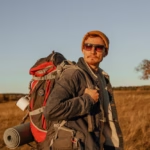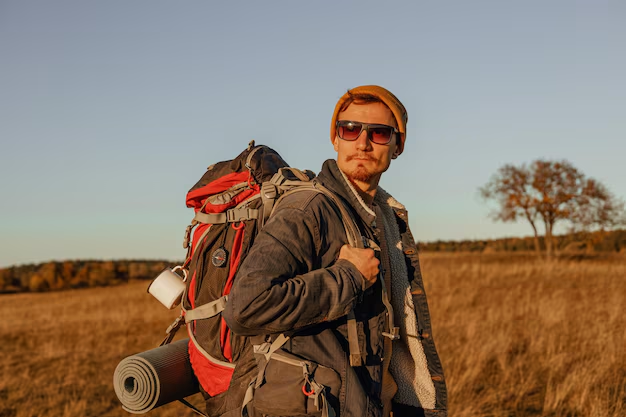
California’s Sequoia National Forest sprawls over the southern Sierra Nevada mountains. Camping here ranks among America’s best. Picture ancient giant sequoias reaching skyward. Crystal-clear streams cut through rugged granite canyons below. This huge wilderness offers many campground choices.
You’ll find spots with modern conveniences. Or seek out primitive backcountry areas. There, the sound is just wind whispering through enormous trees.
Understanding Sequoia National Forest
Sequoia National Forest spans a huge 1.1 million acres, packed with varied landscapes. Unlike Sequoia National Park inside it, this forest offers more options for fun. You’ll find dispersed camping and off-road vehicle use allowed here. Elevation changes dramatically too, starting around 1,000 feet in foothills and climbing past 12,000 feet at mountain summits.
Weather shifts just as much as the elevation. Down low, things stay warm all year. Head higher up, and prepare for heavy snow between November and April. Valleys can hit 100°F in summer, but higher spots stay pleasantly cool. Come spring, wildflowers pop up everywhere, and waterfalls rush with melting snow.
Major Camping Areas
Hume Lake District

Perched at 5,200 feet, Hume Lake sits among mixed conifer forests. Princess Campground is your spot near sandy beaches, offering 90 sites. Sites fit RVs up to 30 feet long. Each comes with a picnic table, fire ring, and bear-proof food box. You’ll find flush toilets and drinking water here too.
Looking for something quieter?
- Logger Flat Campground: Just 12 sites along Ten Mile Creek. Nice for tents or smaller RVs. Easy creek access makes it a family favorite for wading and fishing.
- Landslide Campground: Only 9 sites, offering a more primitive stay. No water, but vault toilets are available. Sites nestle among big boulders, giving more privacy than busier spots.
Kern River District

Kern River carves through steep granite canyons. This makes for top-notch whitewater rafting in California. Along its wild path, several campgrounds offer places to stay.
Fairview Campground sits at 3,500 feet. It has 55 spots. Many sites are right next to Kern River, so you can hear the water all night. Some spots fit RVs as big as 45 feet. You’ll find flush toilets, drinking water, and dump stations here.
Upstream from Fairview lies Goldledge Campground. It feels quieter and more tucked away. Only 37 sites nestle among oak and pine trees, giving you more privacy. Sites are a bit smaller, but getting to the river for a swim or some fishing is still easy.
Down at 2,800 feet, Hospital Flat Campground stays warmer when seasons change. Its 40 sites include big group areas. These are perfect for family gatherings or club trips.
Key things about these spots:
- Fairview: Riverfront sites, handles large RVs, has flush toilets & water.
- Goldledge: More private feel among trees, good river access.
- Hospital Flat: Warmer in spring/fall, offers big group sites.
Western Divide District

This area covers high-country camping among giant sequoias and untouched wild spaces. Elevations usually run between 5,000 and 8,000 feet – it’s pretty high up.
Here’s a look at two campgrounds:
- Quaking Aspen Campground: At 7,000 feet, this spot has 32 sites. Many are tucked under huge sequoias, feeling almost like a cathedral. Sites fit RVs up to 24 feet long. You get water and vault toilets, but no hookups.
- Peppermint Campground: Sitting at 7,100 feet near Peppermint Creek, it offers 19 sites. Being so high keeps things cool even in summer. Sites work for tents or smaller RVs. Anglers can try fishing in the creek.
Hot Springs District

The Hot Springs Ranger District mixes natural hot springs with classic camping. You’ll find spots from 3,000 feet all the way up to 6,000 feet. Different campgrounds offer different vibes.
Down around 4,000 feet, White River Campground has a dozen sites right by the river. Nearby hot springs are a cool feature, but getting there means short hikes. If you’re bringing an RV, keep it under 16 feet. With just vault toilets and no water hookups, it feels a bit more primitive.
Up higher at 6,400 feet, Holey Meadow Campground gives you ten sites. It’s a meadow setting, offering open views instead of dense forest. This spot works for tents or smaller RVs. During open seasons, you get vault toilets and water access.
Key details:
- White River: 12 sites, ~4,000 ft elevation, riverfront, near hot springs (short hike needed), RVs ≤ 16 ft, vault toilets, no water (primitive).
- Holey Meadow: 10 sites, ~6,400 ft elevation, meadow scenery, tents/small RVs, vault toilets + seasonal water.
Reservation Systems and Availability
Planning to book a developed campground? Heads up: many take reservations on Recreation.gov up to five months before your stay. Popular spots, especially near water, disappear fast for summer weekends. Mark your calendar – these reservations open at 8 AM Pacific Time, exactly five months out from arrival.
Not all sites take bookings. Some operate first-come, first-served. During peak summer, these often fill by Thursday afternoon. Arriving earlier in the week boosts your chance of finding an open spot.
For bigger gatherings, group sites are different:
- They require reservations well ahead of time.
- Capacity varies by location, holding 12 to 50 people.
- Expect a higher cost than regular sites.
- Amenities usually include group fire rings and several picnic tables.
Dispersed Camping Opportunities
Sequoia National Forest lets you camp for free almost anywhere away from developed spots – that’s dispersed camping. Just follow a few rules. Set up camp at least 100 feet from any water or trail. You can’t stay in one spot longer than 14 days straight.
Good places to look include roads heading out from Highway 190 near Camp Nelson. Forest Service roads often lead to quiet spots among those massive sequoia trees. While a vehicle with higher clearance helps reach some better sites, regular cars can still get you to plenty of areas.
Since there are no facilities, be ready to handle everything yourself:
- Bring all the water you need.
- Pack out every bit of your trash.
- Use existing fire rings if you find one.
Remember, campfires might not be allowed when fire risk is high.
Seasonal Considerations
Summer is prime camping time. All facilities open up, and the weather is warmest. Higher spots stay comfortable, while lower areas get pretty hot. Book ahead for popular spots – reservations are essential.
Spring brings great camping with fewer people. Wildflowers bloom nicely. Some high places stay shut because of snow, but lower campgrounds are pleasant. Streams run high from melting snow.
Fall camping means beautiful colors and comfy temps. After Labor Day, many sites close down. Those still open offer quiet escapes. Weather shifts fast though, so pack layers.
Winter camping happens mostly at lower levels:
- Most facilities close down for winter.
- Camping in snow needs special gear and know-how.
- Some spots stay open if you want peaceful time among snowy sequoias.
Wildlife and Safety
You’ll find black bears all over Sequoia National Forest. Because of this, storing food properly isn’t just a good idea – it’s required. Always use bear boxes or bear canisters. Never feed bears or leave food sitting out. Remember, things like toothpaste and soap smell interesting to them too, so stash those items with your food.
Mountain lions call these forests home too, but they usually steer clear of people. When hiking, making some noise helps avoid surprising them. Always give wildlife plenty of space. Keep kids nearby and pets on a leash.
Down at lower elevations, especially near rocks or water, you might spot rattlesnakes. Watch your step carefully, especially after dark when using a flashlight is smart. Most snakes would rather just slip away than bother with us.
Here’s a quick recap of key points:
- Bears: Use bear boxes/canisters for all food and scented items. Never feed them.
- Mountain Lions: Hike noisily. Keep distance from wildlife. Secure kids and pets.
- Rattlesnakes: Watch your footing in rocky, low areas near water. Use lights at night.
Activities Near Campgrounds
Find hiking trails for all levels, from easy walks to tough wilderness paths. Many campgrounds lead right to waterfalls, giant sequoias, and amazing views. Grab trail maps at ranger stations or visitor centers.
Fishing spots fill streams, rivers, and lakes across these forests. California requires fishing licenses for ages 16+. Remember, rules change depending on the water, so check what’s current.
Swimming in lakes or calm river stretches is popular. Even in summer, water stays pretty cold. Always keep close watch on kids near water and know the current conditions.
Snap photos everywhere here! Capture giant trees, wildlife, stunning views.
- The best light comes early morning or late afternoon.
- Always give animals plenty of space.
Practical Planning Tips
Water access isn’t the same at every campground. Some spots have drinking water taps, others don’t. Especially if you’re heading off-grid, bring extra jugs or bottles.
Cell service? It’s pretty unreliable out in these woods. Play it safe: download maps before you leave and tell someone your plans. Carrying an emergency beacon or satellite communicator adds a good safety net.
A few more key things for your trip:
- Firewood: Don’t gather wood from the forest – it’s mostly banned to stop bugs. Buy certified wood locally or bring your own from approved places.
- Weather: Mountain conditions shift fast. Pack layers, even in summer. Afternoon storms roll in often up high.
- Supplies: Kernville, Three Rivers, and Springville have gas and groceries. Stock up well before hitting remote areas.
Getting There
Getting to different forest districts is easy using several highways. Highway 190 runs from Porterville up toward Giant Sequoia National Monument. From Bakersfield, take Highway 155 for Kern River camping spots.
Forest Service roads branch off these main routes, leading right to campgrounds. Road surfaces vary – some are paved, others gravel or dirt. Always verify current road conditions, especially in winter and spring months.
Heads up: GPS can be unreliable out in isolated spots. Good maps are essential. Have a rough idea of your direction before you leave.
A Forest Service map is really useful here:
- Shows where campgrounds are located.
- Gives details on road surfaces.
- Provides current condition updates.
Final Thoughts

Sequoia National Forest has camping for everyone. Choose plush RV spots or rough-it wilderness sites. Giant sequoias tower over campsites, making for stunning views. Different elevations mean you can usually find comfortable weather, whatever the season.
You might want a developed campground with facilities. Or maybe a quiet, off-grid spot is more your style. This forest delivers great outdoor adventures, matching any camping preference.






0 Comments